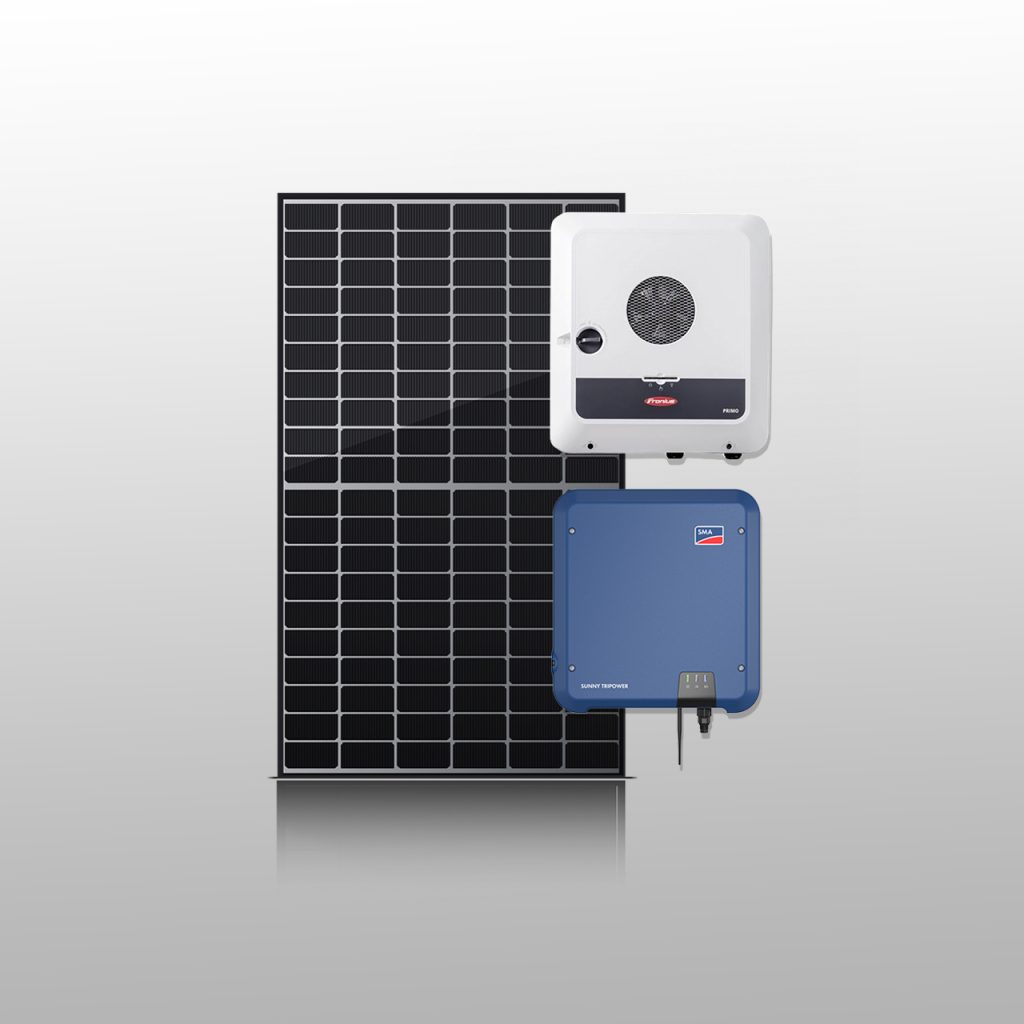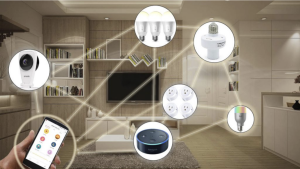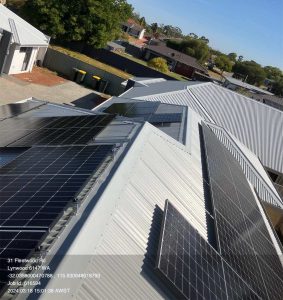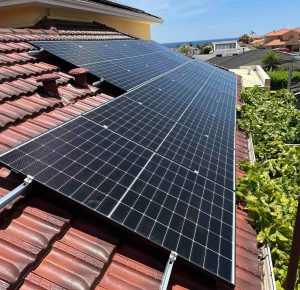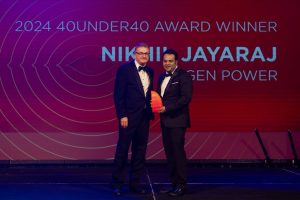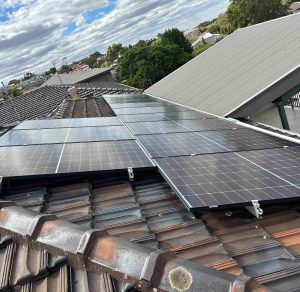Your quest for finding the top residential solar inverter extends far beyond the usual string variety. Even if you choose between a European inverter and a Chinese inverter, what about the quality? Would it be a premium inverter or an economy inverter that aligns with your needs and aspirations? But first, we will understand about the type of inverters available in the market
- String inverters are economy inverters that shine in efficiency. They handle groups of panels connected in sequence, ideal for simple setups and maximizing output.
- Hybrid inverters, as the name suggests are the best of both grid and battery power inverters. They act as both string inverters and battery chargers, empowering you to store the sun’s bounty for self-sufficiency, even offering decent backup during outages.
- Off-grid inverters are ideal for remote locations. These versatile powerhouses, often coupled with battery storage, use wild solar energy for reliable off-grid living, day and night.
- Microinverters can also produce energy in low sunlight. Unlike String inverters, these are coupled with each solar panel separately. Being a premium inverter, they can produce energy even after panel mismatch and shading issues. With longer lifespans and lower failure rates, microinverters offer improved efficiency and reliability in residential solar systems.
European and Chinese Brands
Customers now have a plethora of options to choose from European and Chinese inverter brands in the Australian market. European inverters like Fronius and SMA prioritize longevity and reliability, while Chinese brands like Goodwe and Huawei offer innovative features and competitive pricing, catering to diverse consumer preferences in the Australian residential solar inverter market. You just need to identify which brand is going to be the perfect fit!
| Features | Fronius | SMA | Goodwe | Huawei |
| Origin | Austria | Germany | China | China |
| Founded | 1945 | 1981 | 2010 | 1987 |
| Popular Models | Primo, Symo | Sunny Boy, Sunny Tripower | DNS, XS, SDT Series | SUN2000, SUN2000L |
| Average Lifespan | 10-15 years | 10-15 years | 8-12 years | 10-15 years |
| Warranty | 10 years | 5-10 years | Up to 10 years | 5-10 years |
| Key Advantages | High reliability, premium performance | Industry standard, robustness | Competitive pricing, sleek design | AI integration, Smart PV solutions |
| Market Presence | Global | Global | Global | Global |
| R&D Focus | Innovation in performance | Diverse applications | Technology & pricing | AI, Cloud integration, ICT technologies |
| Notable Features | Extensive warranty coverage | Wide product range | Quiet operation, WiFi connectivity | Smart O&M, AI integration |
Fronius has long been Australia’s most popular residential inverter brand
Fronius Inverters have dominated the Australian residential market, capturing approximately 23% market share by the close of 2022. Renowned as a top European inverter brand, Fronius solidified its position through reliability and high performance. It offers a warranty period of 10 years. However, their surge in popularity became directly proportional with a significant manufacturing expansion across European plants, scaling capacity from 4 GW to 7 GW in 2022. This ambitious expansion aimed to meet increasing demand but, in turn, led to temporary disruptions in production of Fronius inverters. The company admitted that even they did not expect that Fronius would be able to make this large and loyal customer base.
Chinese solar inverters are good for residential purposes?
Chinese solar inverters have garnered attention in Australia due to their affordability and widespread availability. Let’s see what features make them a go to brand.
Quality and reliability vary among Chinese inverter brands. Sungrow and GoodWe, for instance, have gained recognition for their durability and performance in Australian conditions. However, the quality they offer with different features should be compared with what you want before buying.
Efficiency in rough climatic conditions remains an attractive feature. While some Chinese inverters effectively combat extreme temperatures, others might require additional measures for optimal performance.
Warranty and after-sales support also factor into the decision-making process. Brands providing a good warranty period and reliable customer support, coupled with local service centers, offer peace of mind regarding maintenance and technical assistance.
Adherence to Australian standards and regulations can’t be ignored. Chinese manufacturing giants ensure compliance to guarantee safety and performance. If a Chinese inverter has certifications from bodies like the Clean Energy Council, go for it!
Cybersecurity is a red flag across various inverter brands irrespective of country of origin. Optimizing the system with default passwords, secure internet connections, and installing cybersecurity measures mitigate these risks.
Chinese inverters’ competitive pricing attracts consumers, but the balance between cost and quality remains a deal breaker for some. However, installation by certified professionals ensures compliance and maximizes system efficiency, regardless of the inverter’s origin.
Choosing your top residential solar inverter with a track record in the Australian market can be tricky. If we consider factors like quality, warranty, compliance, and installation by recognised professionals determine the Chinese inverter’s suitability for specific Australian conditions, given the affordability.
How long do residential solar inverters last?
Residential solar inverters play a crucial role in converting solar panel-generated DC power into usable AC power. They come in two primary forms: string inverters and microinverters. String inverters, often equipped with module-level power electronics (MLPE) like DC optimisers, suit roofs with minimal shading or ideal sun orientation. Known for simplified wiring and centralized repair ease, they’re usually less expensive, constituting 10-20% of the total installation cost. However, their inverter life typically ranges from 10 to 15 years due to quicker component aging, especially capacitors, compared to solar panels that can endure 25-30 years.
Microinverters offer an alternative with a longer life expectancy of around 25 years, nearly aligning with the panel lifespan. While upfront costs might be higher, their failure rates tend to be substantially lower than string inverters. The inverter guarantee of microinverters span 20 to 25 years. Similarly, DC optimisers, often paired with string inverters, are designed for 20-25 years of service and come with a guarantee or warranty for a similar time. Although microinverters and DC optimisers demonstrate promising longevity, being relatively newer technologies, their actual performance over extended periods is yet to be fully realized.
Understanding the differences in lifespan, safety, security, cost and warranty coverage are some parameters to make informed decisions when selecting the appropriate inverters for residential solar setups. Whether it is economy or premium, Chinese or European, Micro or string, there is not one size fits all. Consumers will have to find for themselves which features are a must and which they can write off from their checklist!
